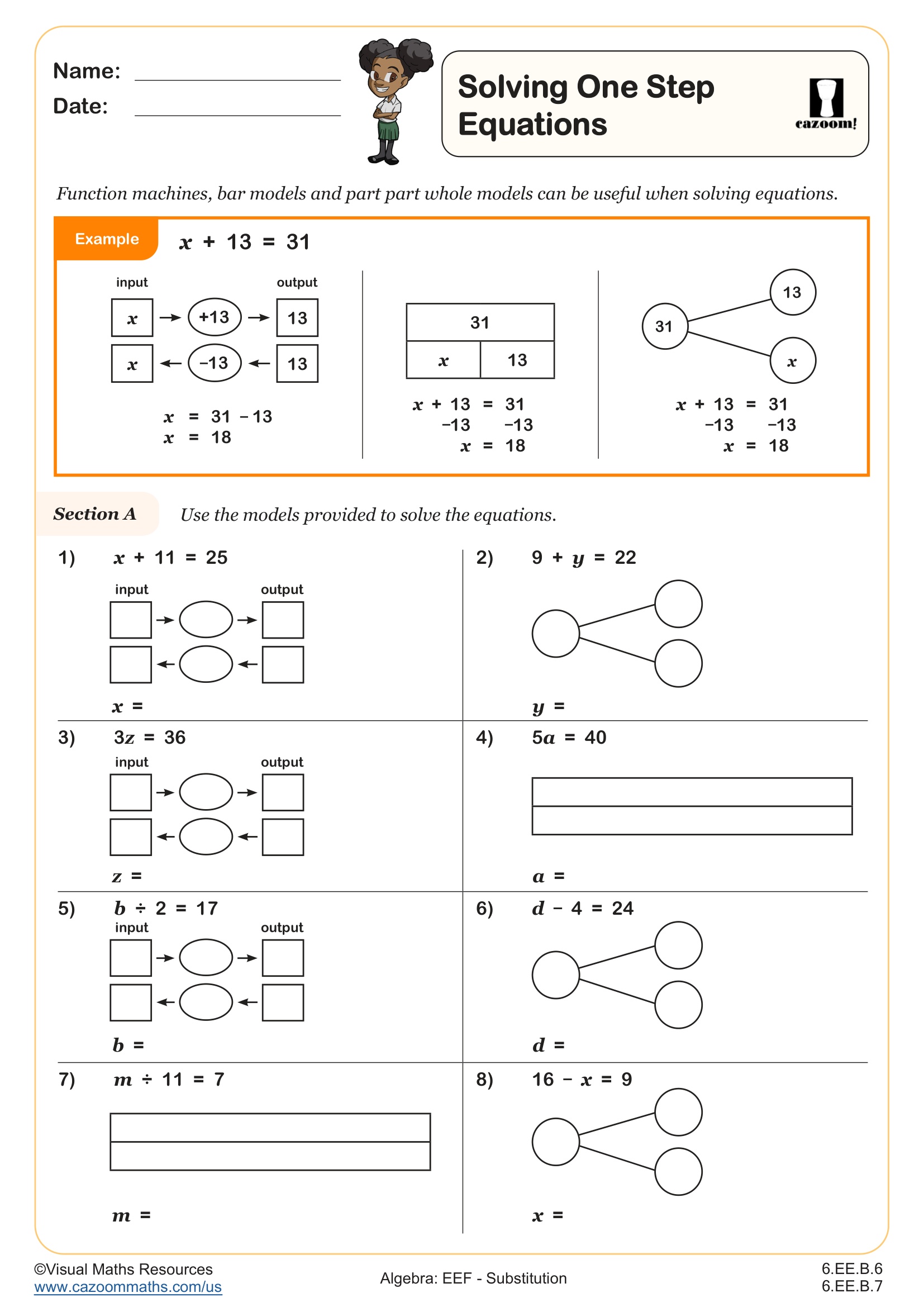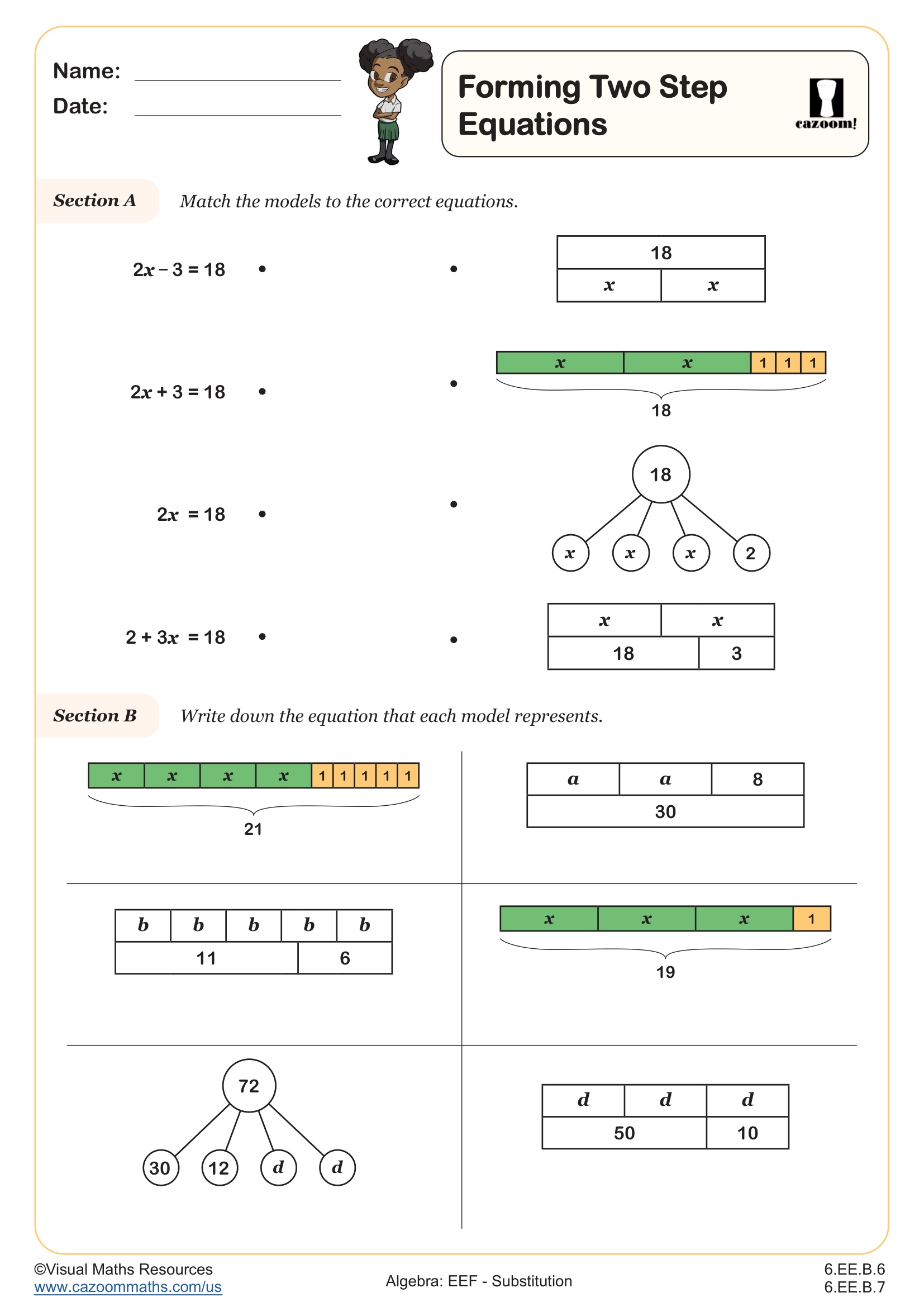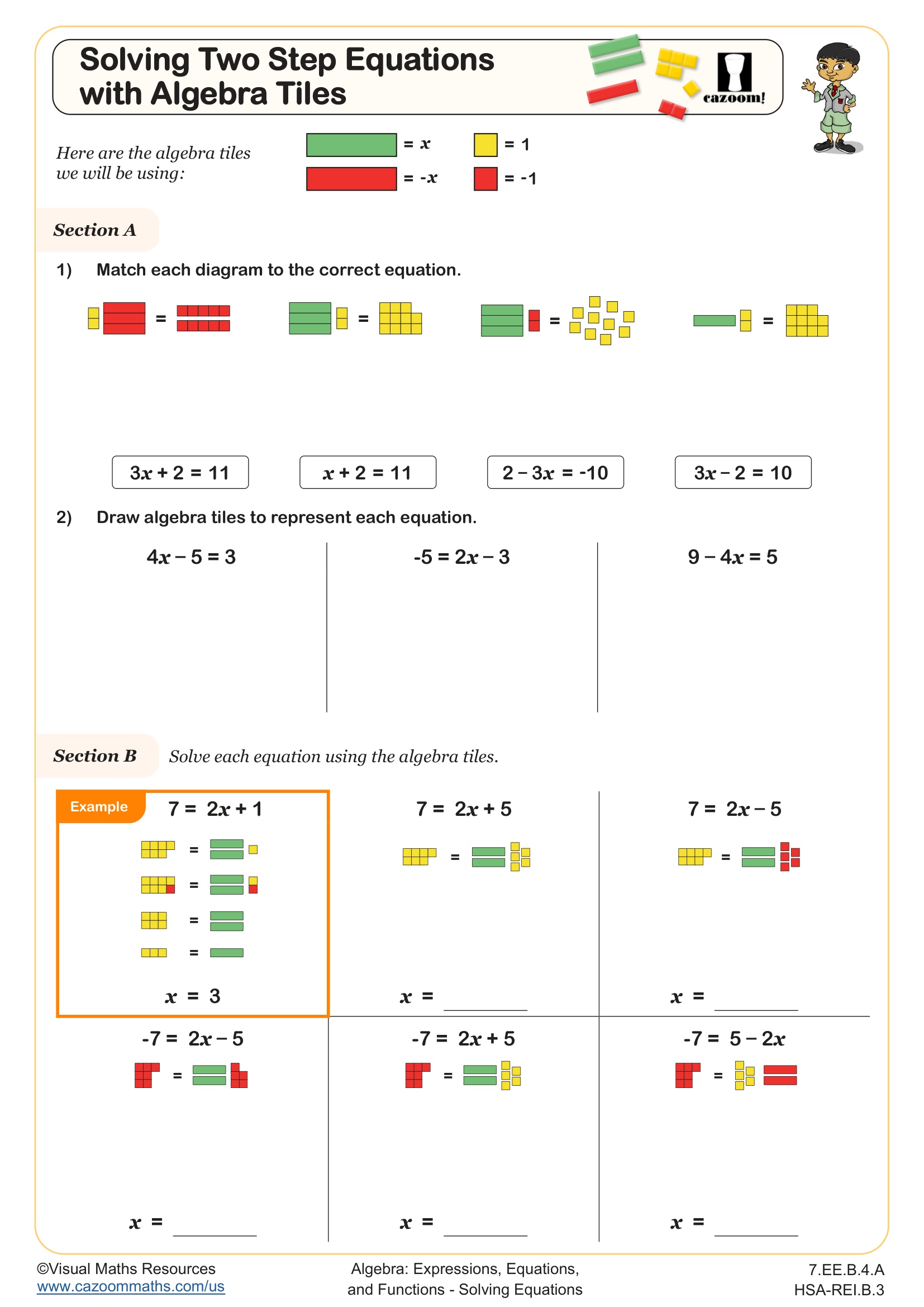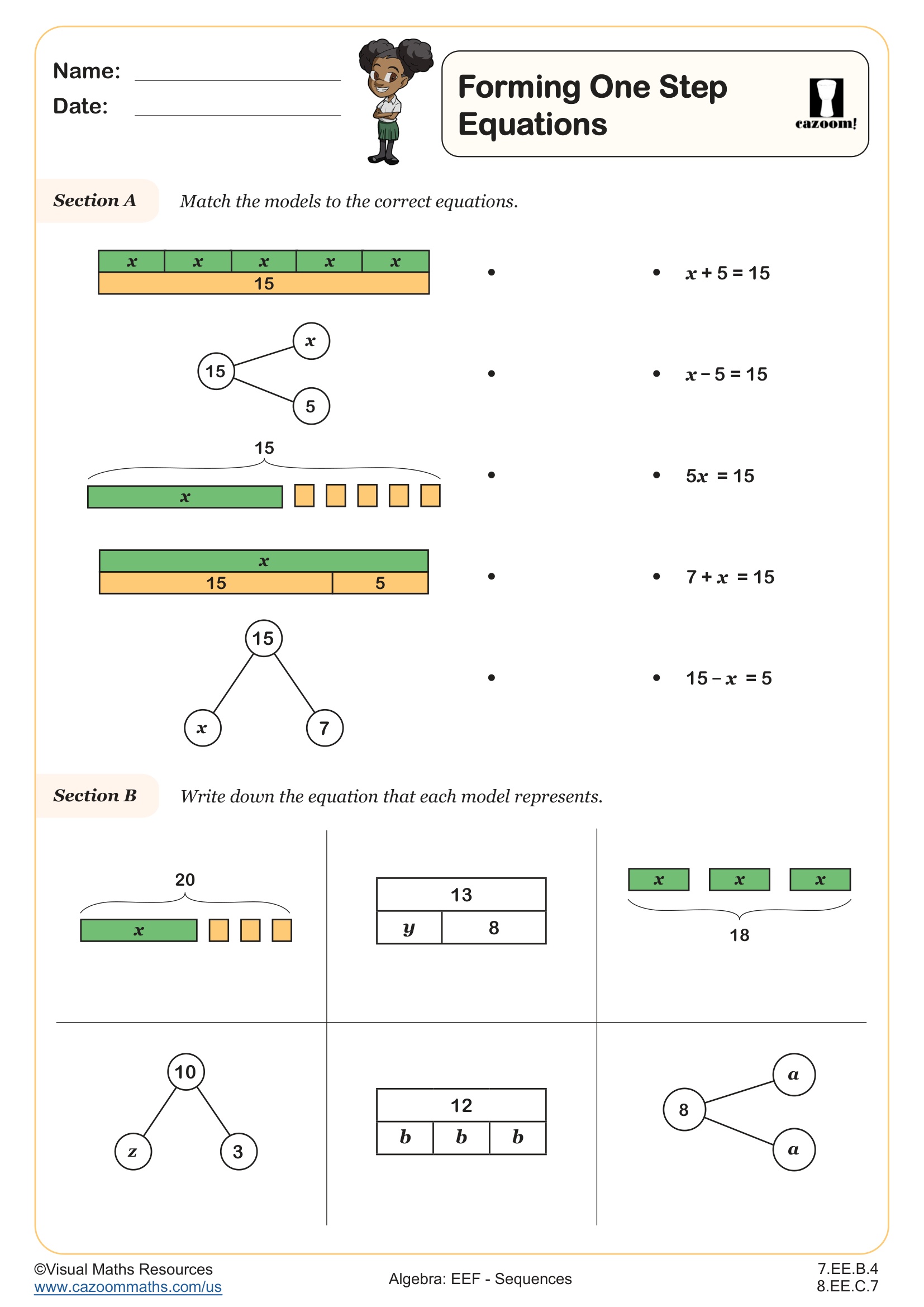Forming One Step Equations Involving Division WORKSHEET
Interpret and compute quotients of fractions, and solve word problems involving division of fractions by fractions, e.g., by using visual fraction models and equations to represent the problem. For example, create a story context for (2/3) ÷ (3/4) and use a visual fraction model to show the quotient; use the relationship between multiplication and division to explain that (2/3) ÷ (3/4) = 8/9 because 3/4 of 8/9 is 2/3. (In general, (a/b) ÷ (c/d) = ad/bc.) How much chocolate will each person get if 3 people share 1/2 lb of chocolate equally? How many 3/4-cup servings are in 2/3 of a cup of yogurt? How wide is a rectangular strip of land with length 3/4 mi and area 1/2 square mi?
Forming One Step Equations Involving Division WORKSHEET DESCRIPTION
Students can solely focus on the representation of equations involving division with this worksheet.
Learners will begin by drawing bar models that represent five equations in section A. Here, the scaffolding decreases steadily, allowing students to work independently.
In section B students will write down the equations that are represented by three different bar models.
Section C sees learners combining these skills as they will write down the equation and construct bar models to represent three different written scenarios such as “Katie shares a packet of cookies with 4 friends, they get 3 cookies each”.
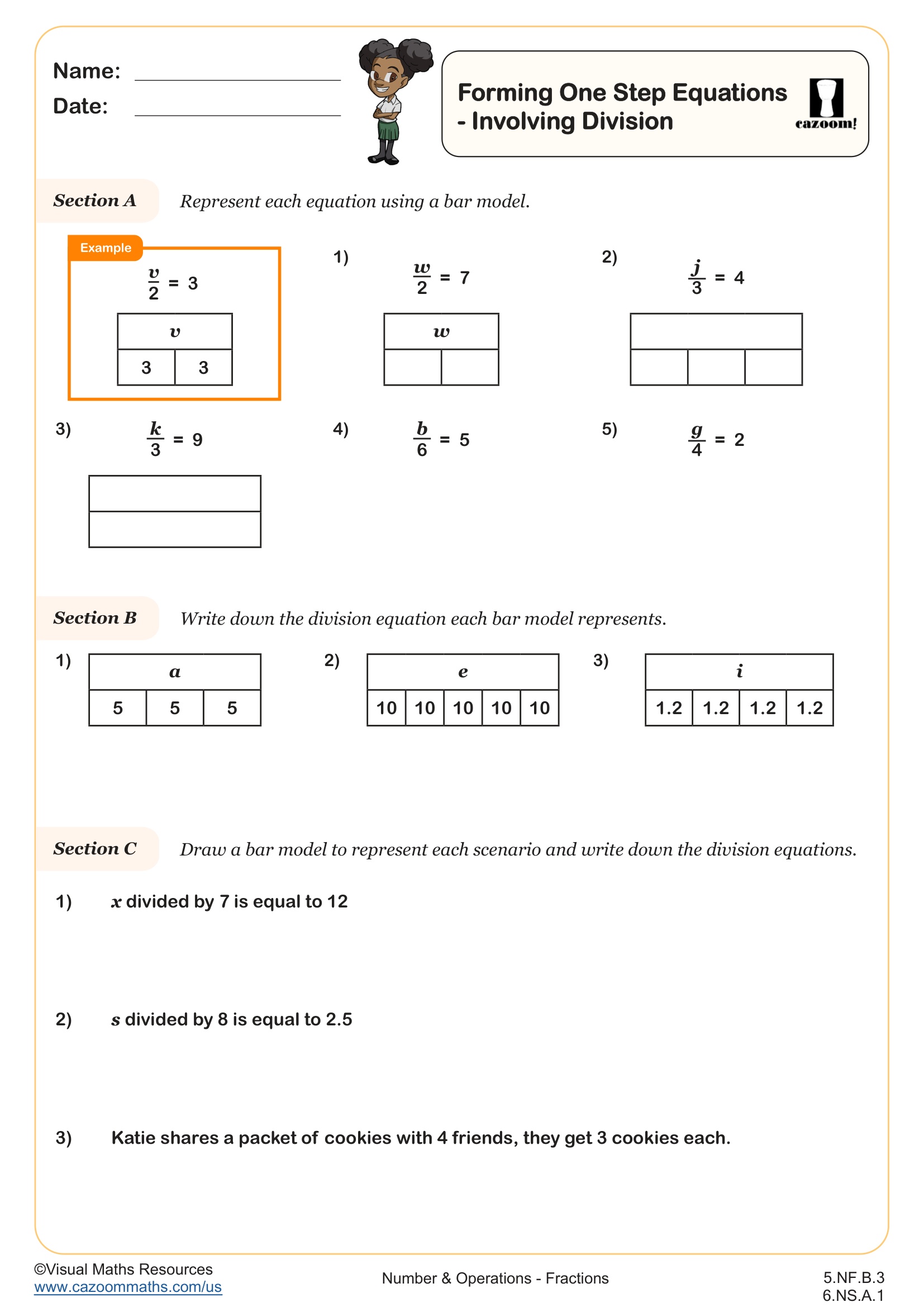
RELATED TO Forming One Step Equations Involving Division WORKSHEET
Frequently Asked Questions
This forming one step equations involving division worksheet is designed for students in 5th Grade and 6th Grade and aligns with Common Core State Standards.
